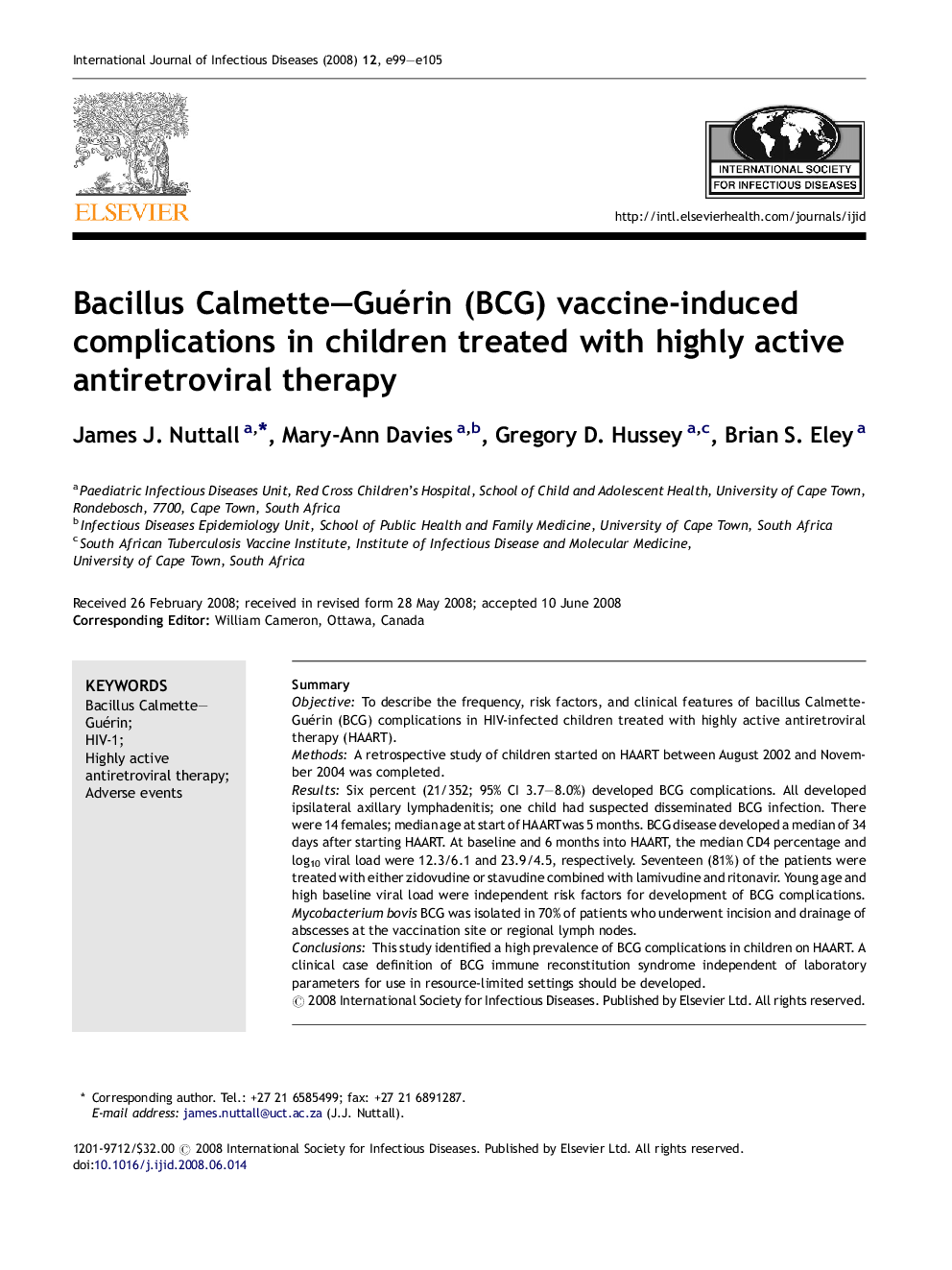| Article ID | Journal | Published Year | Pages | File Type |
|---|---|---|---|---|
| 3364843 | International Journal of Infectious Diseases | 2008 | 7 Pages |
SummaryObjectiveTo describe the frequency, risk factors, and clinical features of bacillus Calmette-Guérin (BCG) complications in HIV-infected children treated with highly active antiretroviral therapy (HAART).MethodsA retrospective study of children started on HAART between August 2002 and November 2004 was completed.ResultsSix percent (21/352; 95% CI 3.7–8.0%) developed BCG complications. All developed ipsilateral axillary lymphadenitis; one child had suspected disseminated BCG infection. There were 14 females; median age at start of HAART was 5 months. BCG disease developed a median of 34 days after starting HAART. At baseline and 6 months into HAART, the median CD4 percentage and log10 viral load were 12.3/6.1 and 23.9/4.5, respectively. Seventeen (81%) of the patients were treated with either zidovudine or stavudine combined with lamivudine and ritonavir. Young age and high baseline viral load were independent risk factors for development of BCG complications. Mycobacterium bovis BCG was isolated in 70% of patients who underwent incision and drainage of abscesses at the vaccination site or regional lymph nodes.ConclusionsThis study identified a high prevalence of BCG complications in children on HAART. A clinical case definition of BCG immune reconstitution syndrome independent of laboratory parameters for use in resource-limited settings should be developed.
